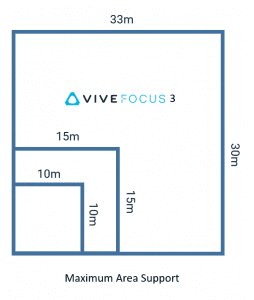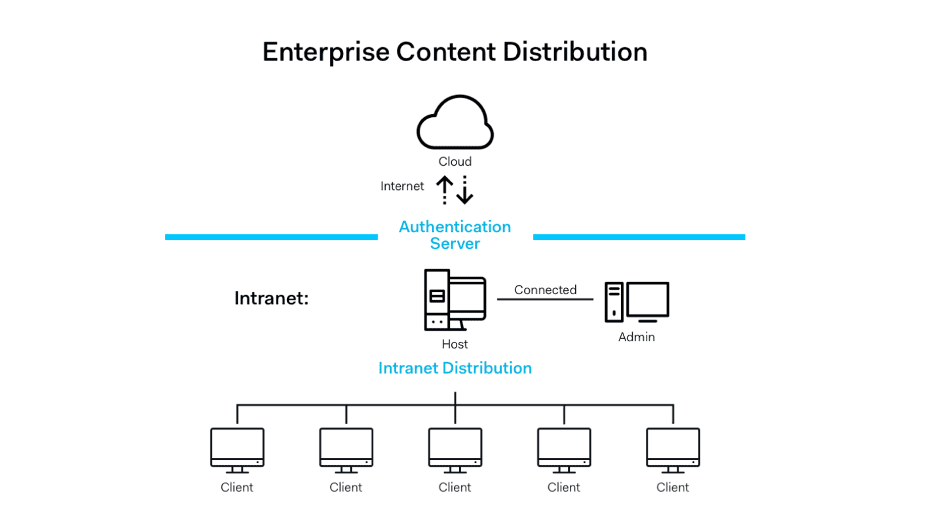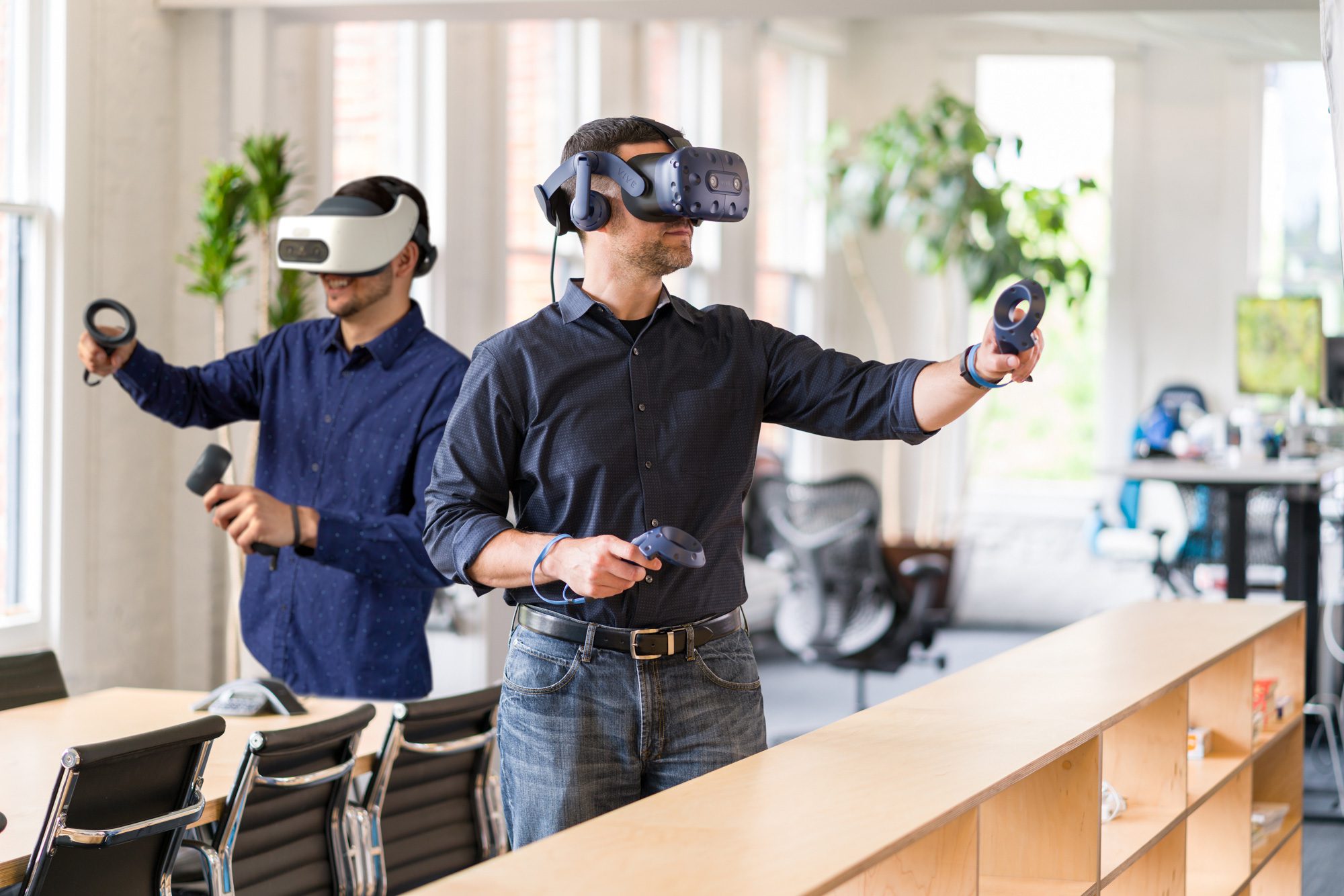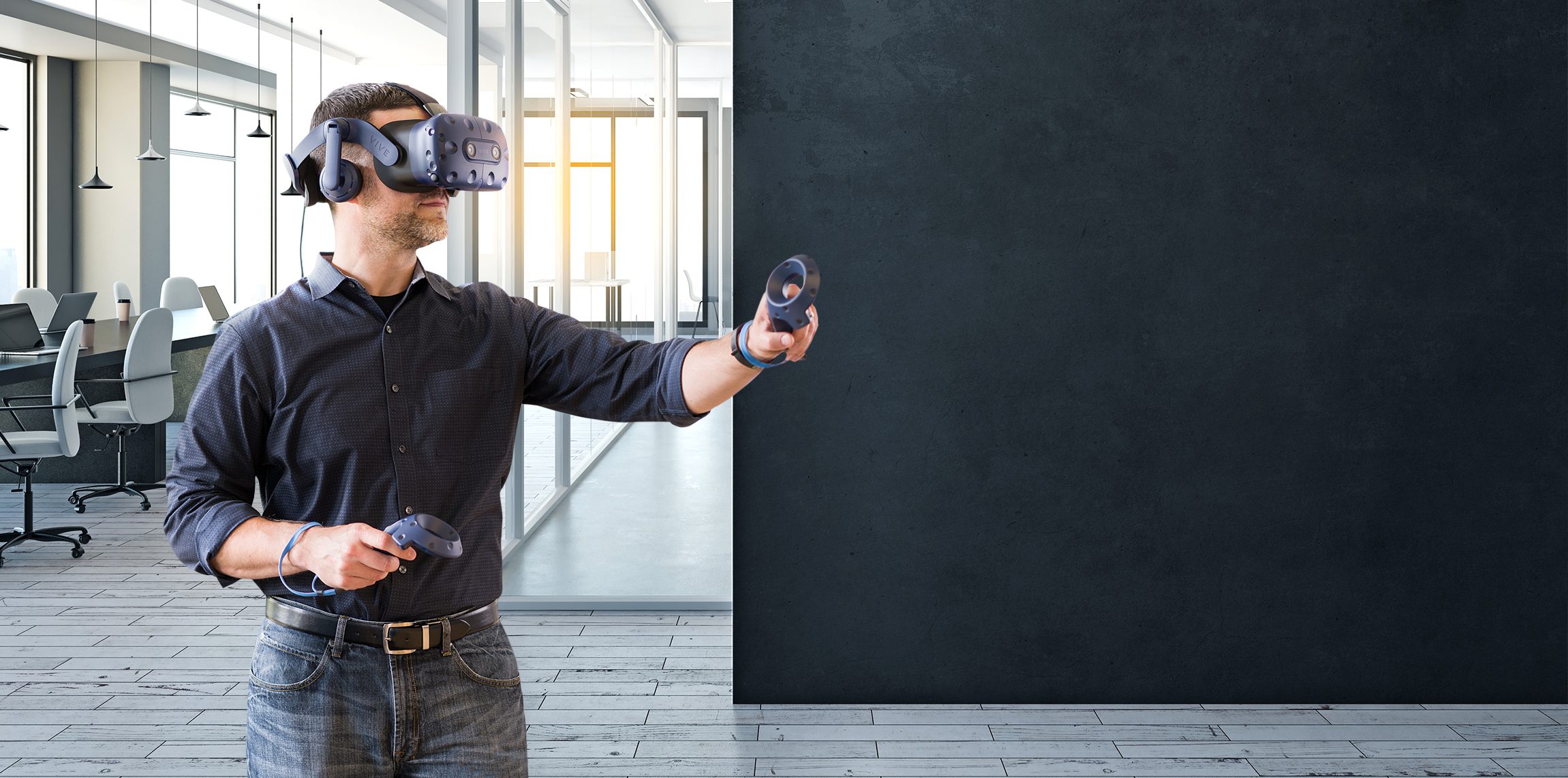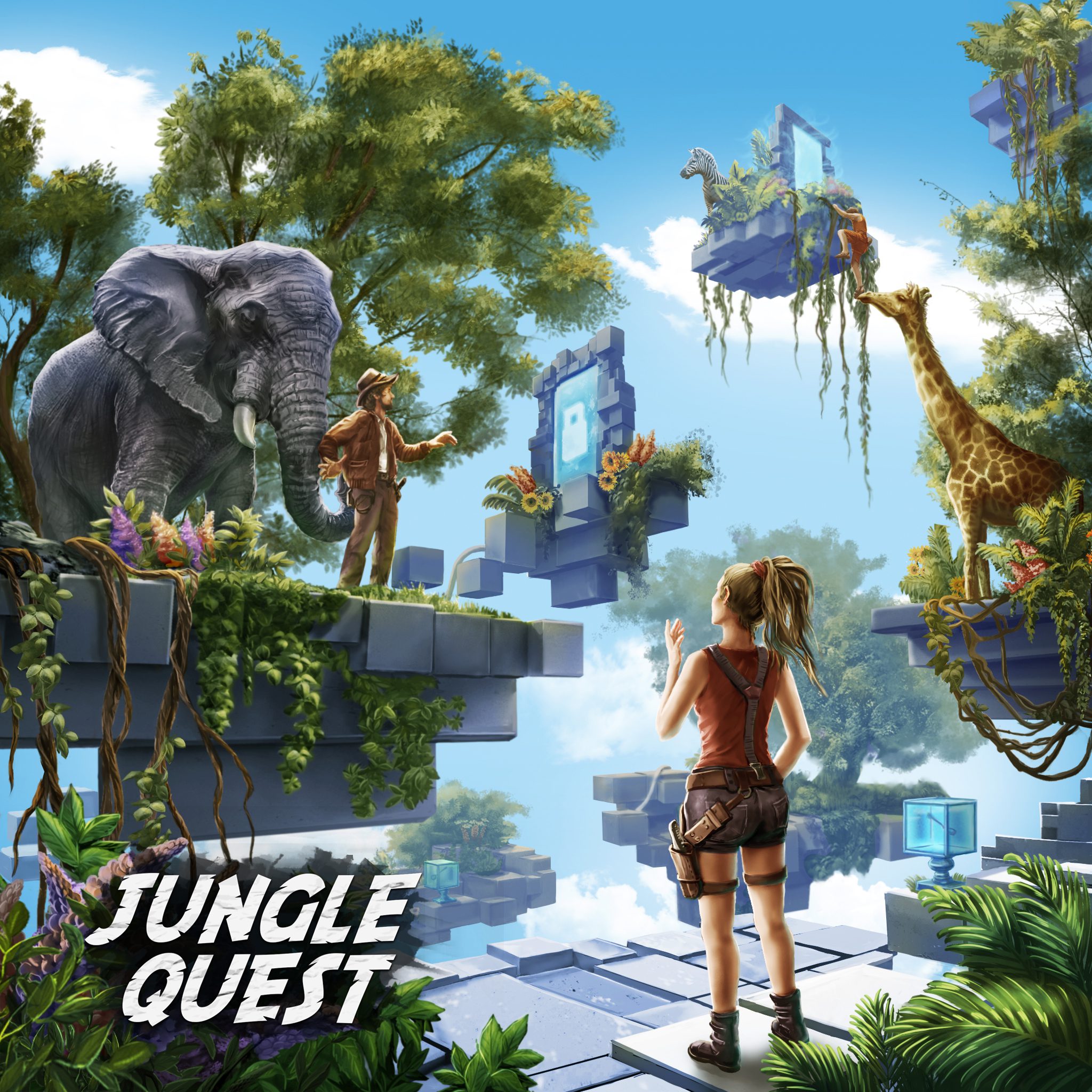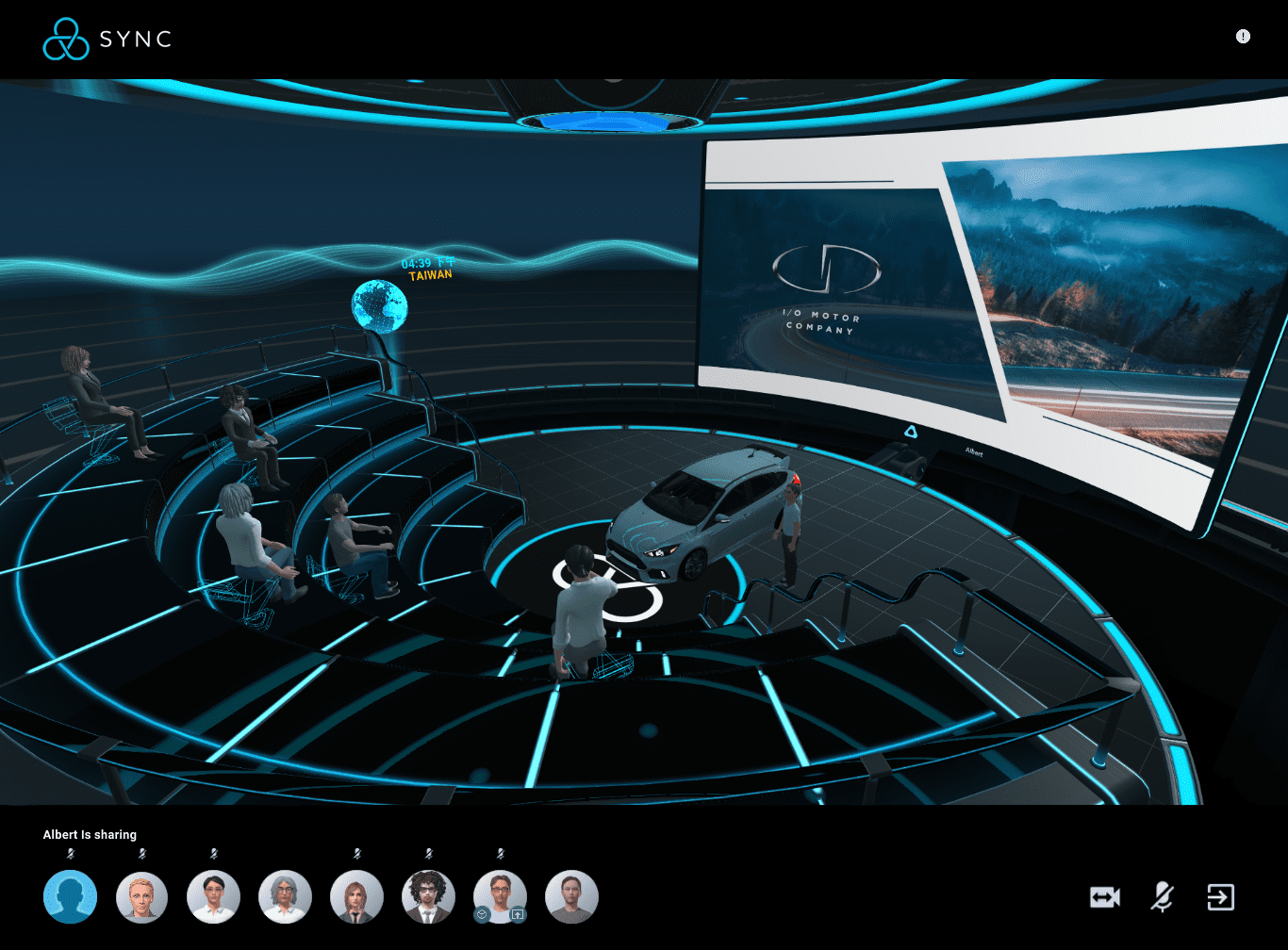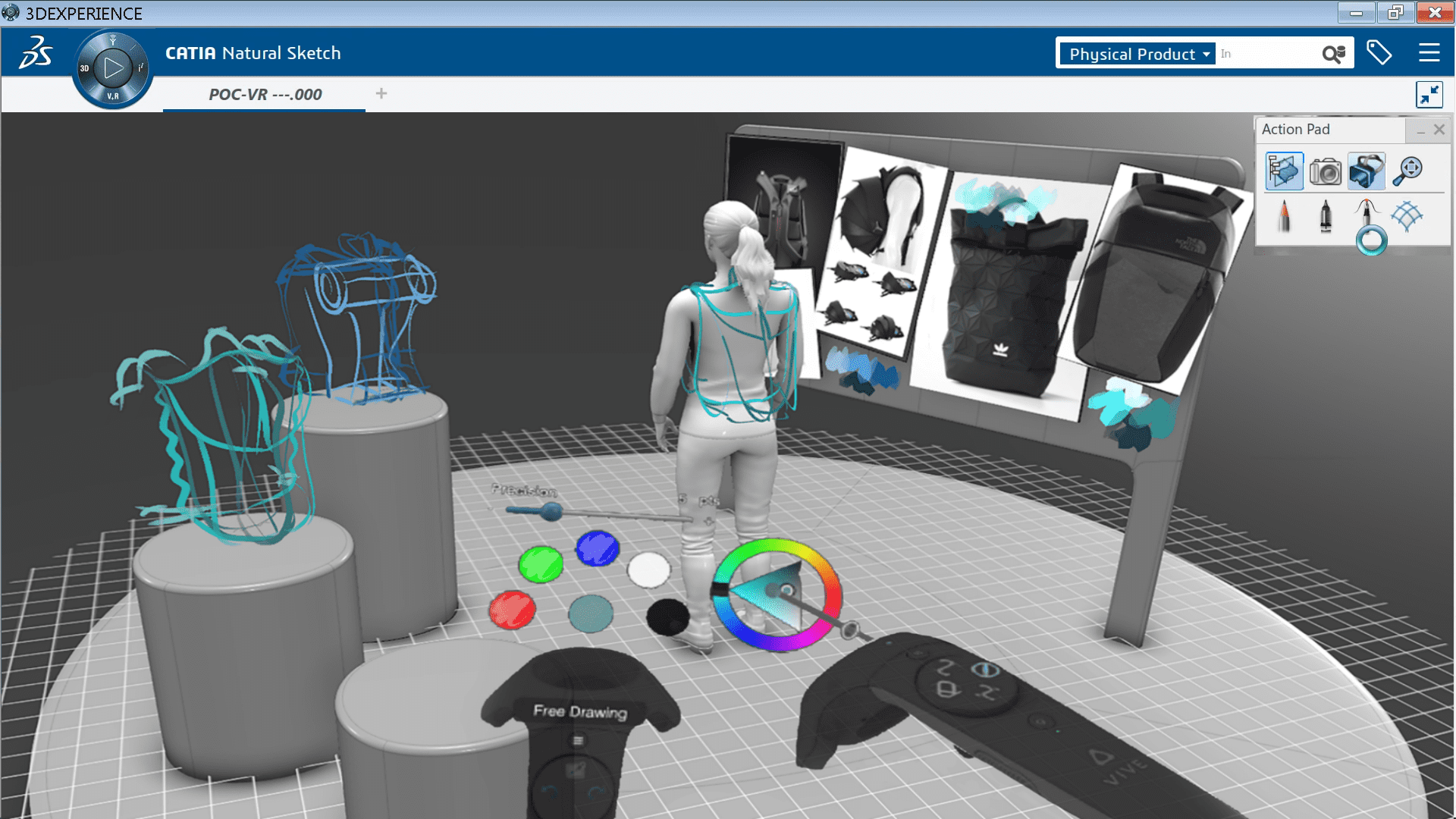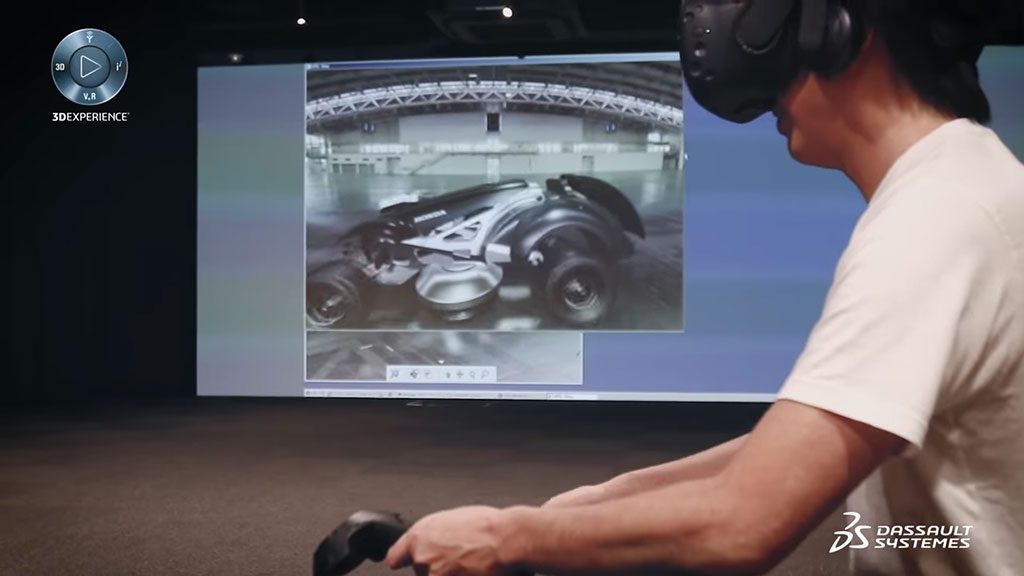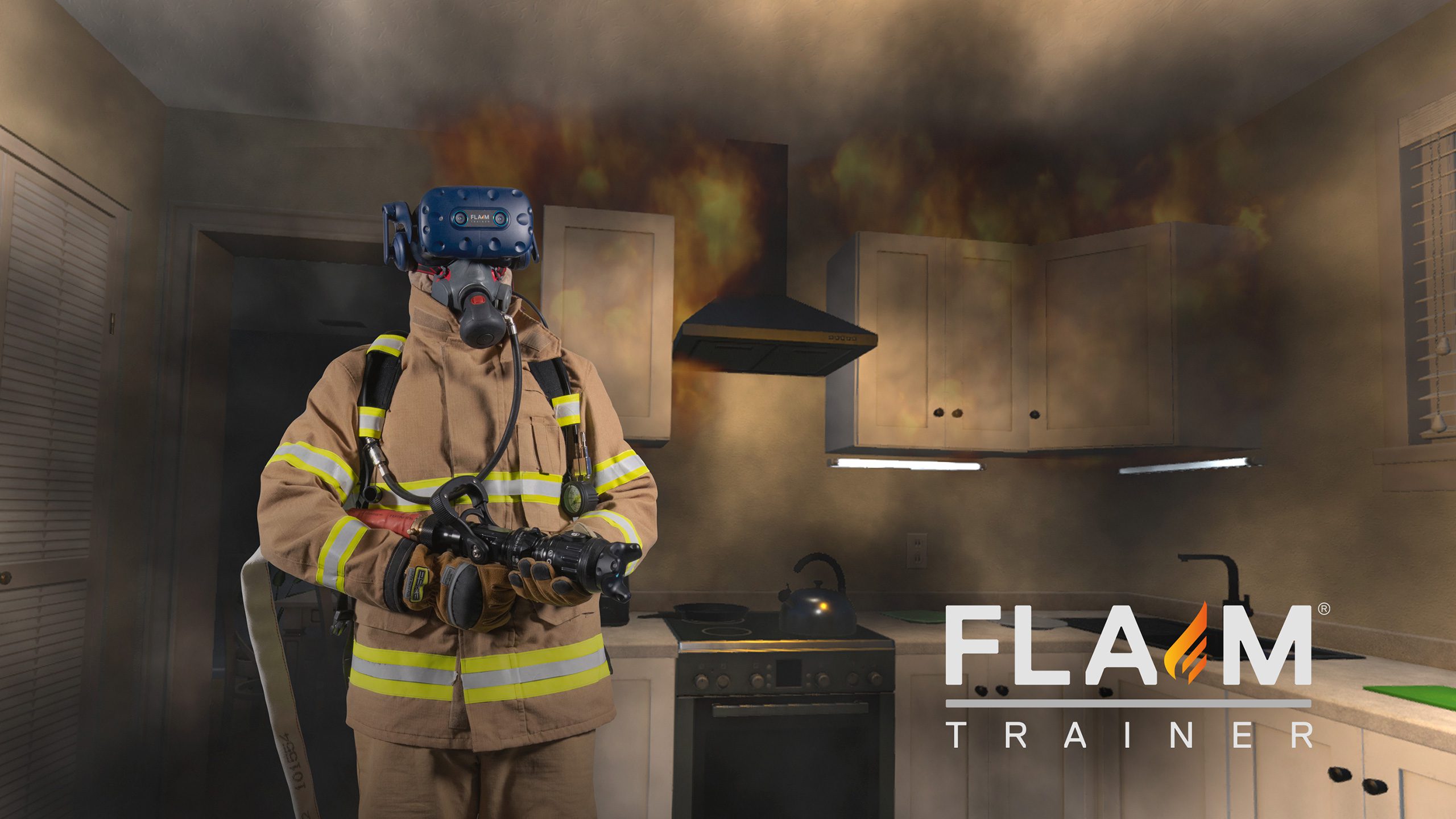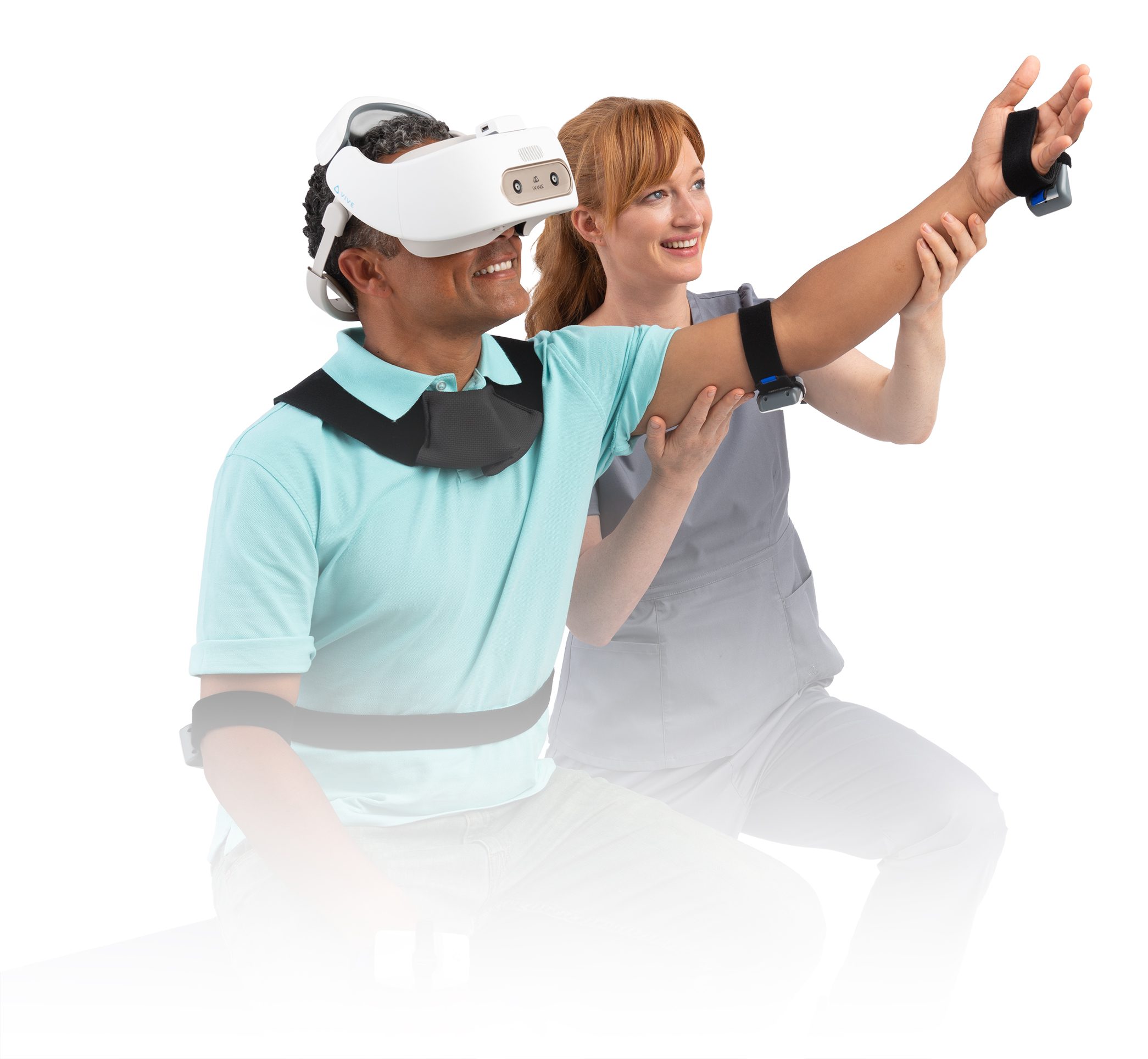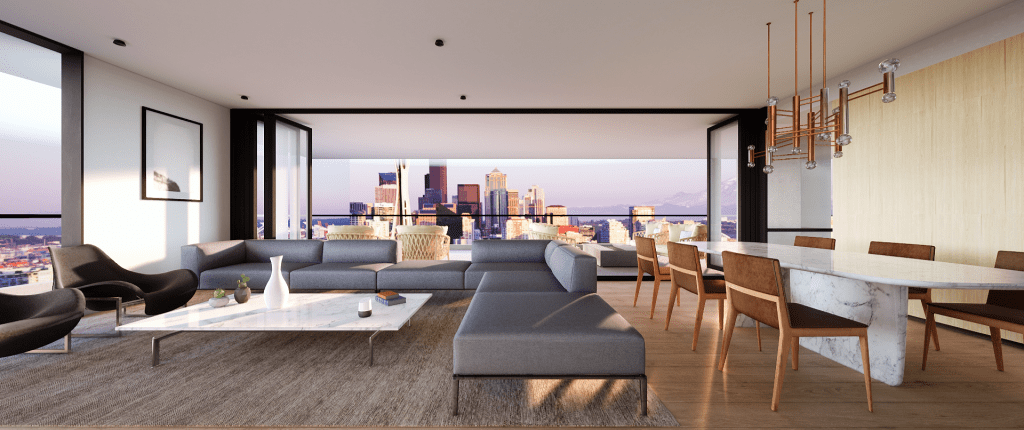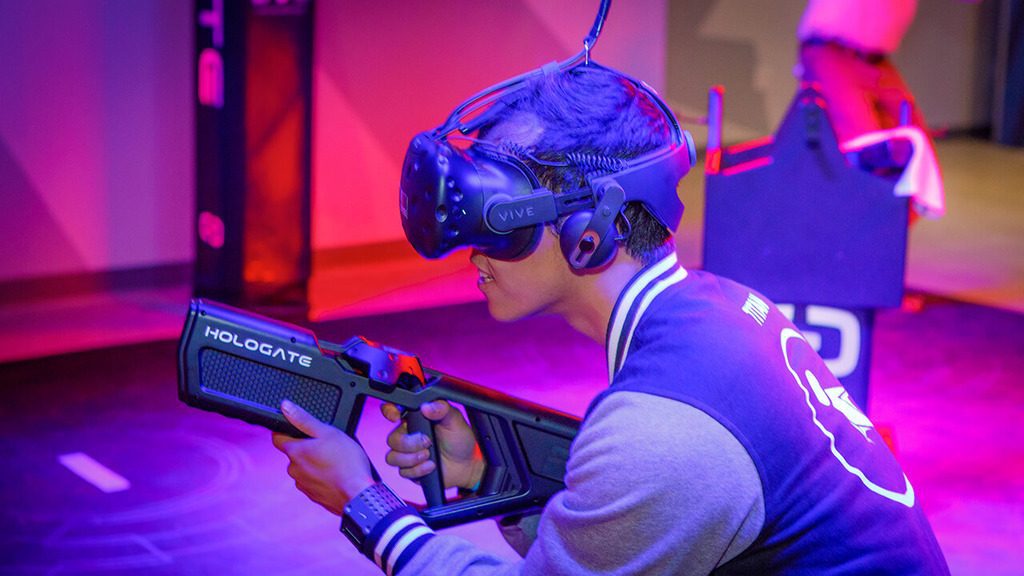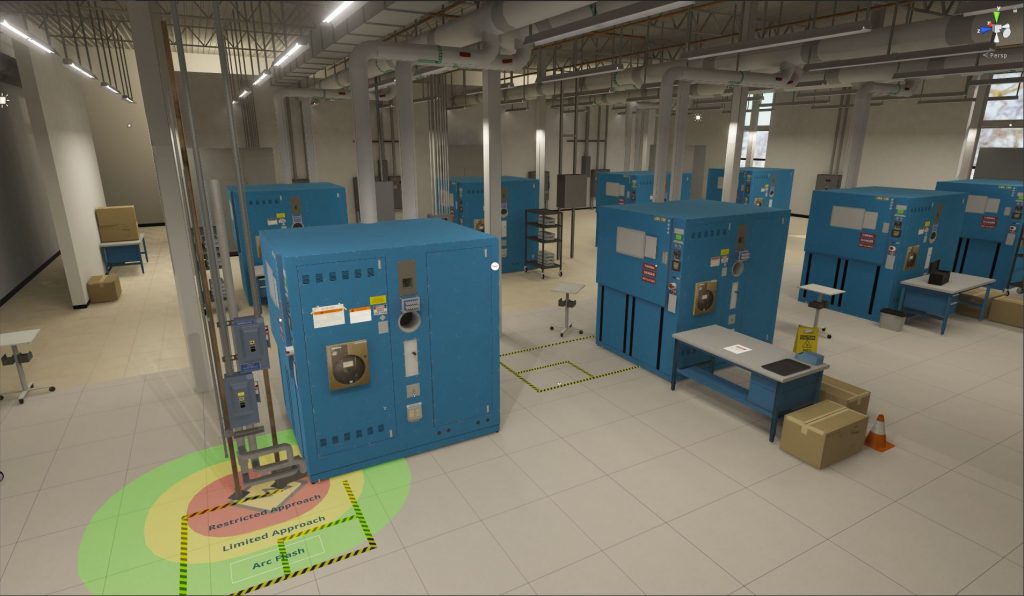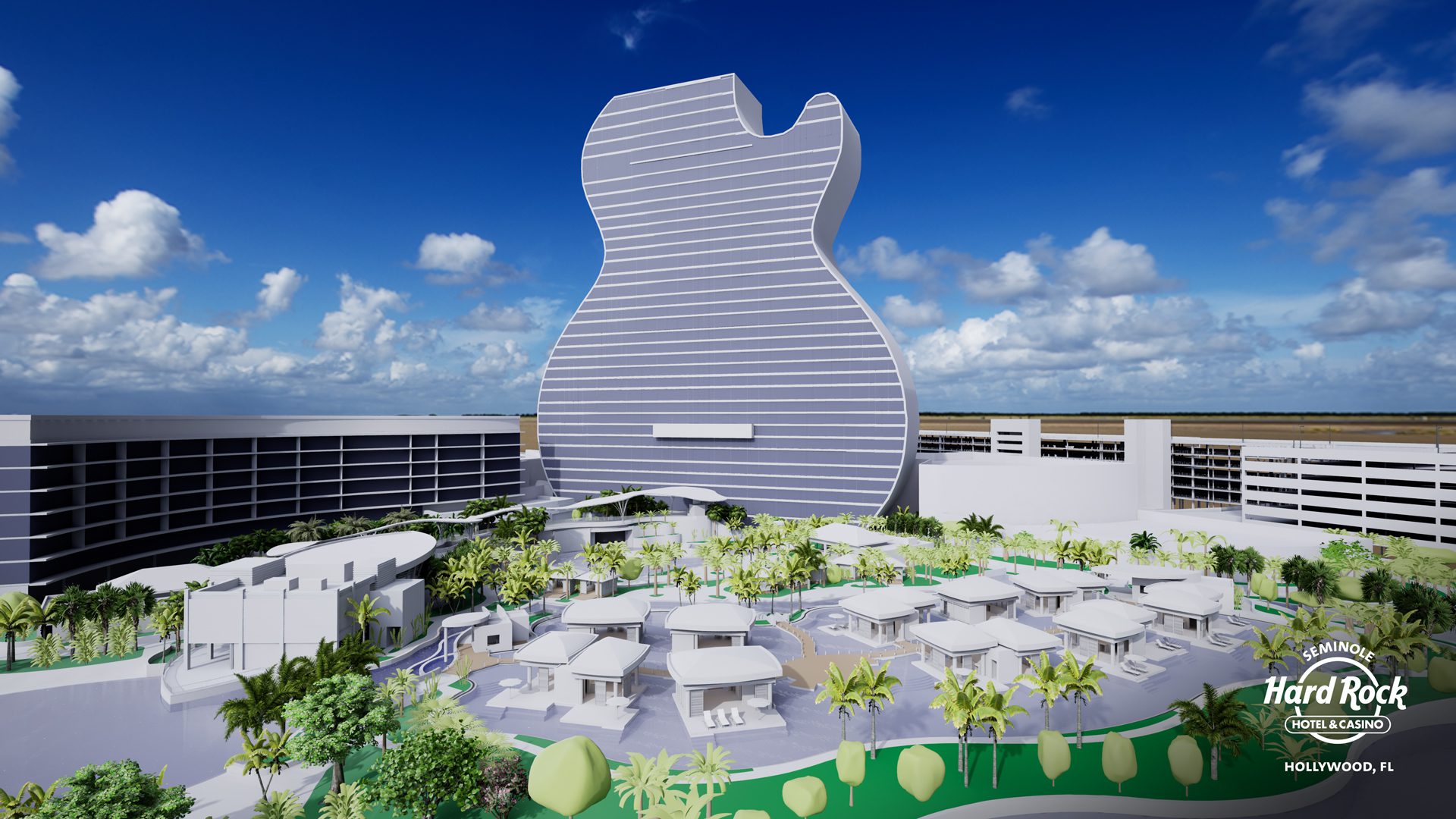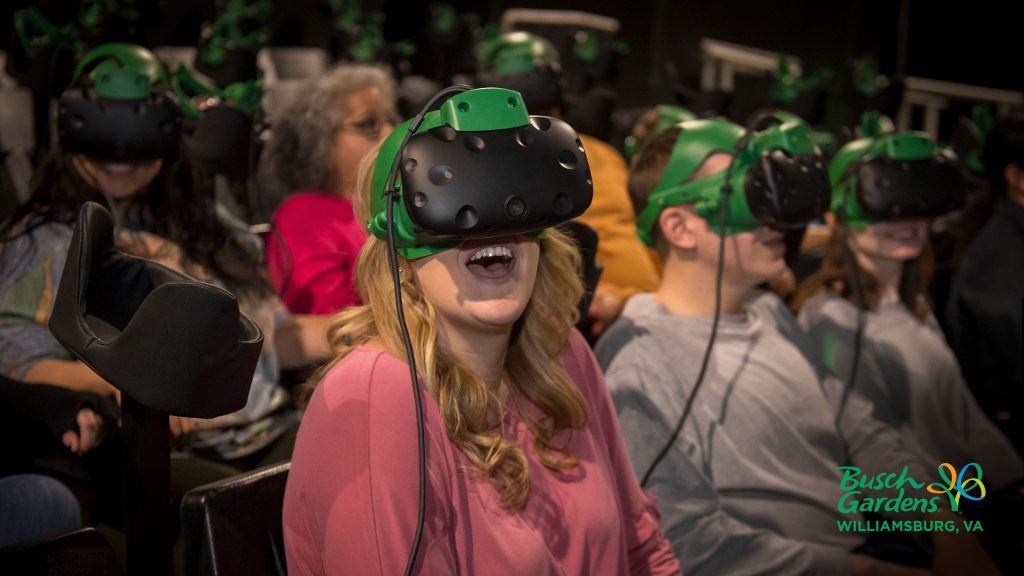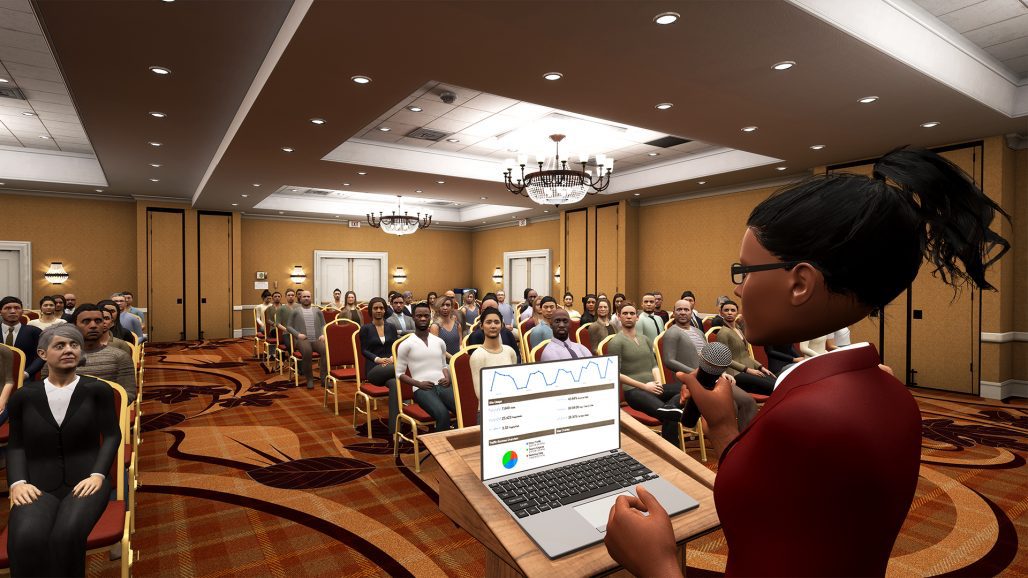Schlagwort: Vive Enterprise
-

Hand Tracking on HTC VIVE Focus 3 Gets Performance, Stability, and Accuracy Improvements
Reading Time: 2 minutesHTC VIVE is excited to announce that the hand tracking feature on our premium enterprise VR headset, VIVE Focus 3, has received significant performance, stability, and accuracy improvements. These benefits are unlocked with our latest firmware version 3.0.999.284, available for free to all customers worldwide starting today. With our upgraded hand tracking…
-

VIVE Pro 2 Named Honoree in the CES® 2022 Innovation Awards
Reading Time: 2 minutesToday, we are proud to share that the VIVE Pro 2 was named a CES® 2022 Innovation Awards Honoree in the Virtual & Augmented Reality category. The CES Innovation Awards program, owned and produced by the Consumer Technology Association (CTA)®, is an annual competition honoring outstanding design and engineering in 27 consumer…
-

Introducing New Features for VIVE Focus 3
Reading Time: 7 minutesToday, we’re rolling out new features specifically designed for customers using location-based applications. We’re excited to offer this set of features on VIVE Focus 3, our all-in-one wireless headset with outstanding visuals and next level inside-out tracking. VIVE Focus 3 was thoughtfully designed to provide capabilities that were not yet supported at…
-

VIVE XR Suite Now Available in Four New Markets
Reading Time: 3 minutesHTC VIVE’s XR Suite, the enterprise-focused integrated VR software bundle, today expanding to additional markets for the enterprise. The solution which enables users to stay productive and collaborate even when physically apart via VR headsets, PCs, laptops, tablets, and smartphones, is now available to purchase in EMEA, Australia, New Zealand and Taiwan.…
-

Ready to scale your company’s VR? Here are the tools to take it to the next level.
Reading Time: 2 minutesFrom education to entertainment, manufacturing to medical, training to design, and everything in-between, companies have realized the ROI of VR. Businesses of all sizes and across industries have accelerated their adoption of VR in the past year, and are getting ready to scale their VR networks as the global workforce becomes more…
-

Which VR Headset is Best for Your Business?
Reading Time: 4 minutesYou may be familiar with what VR can do in terms of gaming and immersive entertainment experiences. But, in addition to traveling to new worlds, battling zombies, and learning about other cultures, virtual reality has been an invaluable resource for the business community for many years. From engineering to research, to workplace…
-

HTC Vive and ARVI VR Partner to Expand Global VR Arcade Presence
Reading Time: 2 minutesExclusive VR escape–room content to be deployed across hundreds of location-based entertainment (LBE) sites. HTC VIVE®, the leader in premium virtual reality (VR) and arcade solutions, today announced a collaboration with ARVI VR to extend their presence to a greater number of location-based entertainment (LBE) VR sites across the globe. The first wave will open this year…
-

REAL™ Immersive System with HTC VIVE Wins Design Award
Reading Time: 2 minutesThere’s never a shortage of challenges facing the world and we want to be part of solutions. That’s why we are taking a moment today to congratulate our partners at Penumbra for winning the Core77 Design Award for Health & Wellness. As we shared in March, The REAL™ System is an immersive,…
-

VIVE Sync Feature Updates: June 2020
Reading Time: 3 minutesMonths into working remotely and feeling the effects of “Zoom fatigue”, we are all trying to find new ways to connect with coworkers and partners. What is the best way to continue to foster workplace community, culture and collaboration remotely? At VIVE, we’ve been using our own internal tool, VIVE Sync, to…
-

Case Study: CannonDesign boosts efficiency with VIVE and NVIDIA remote collaboration platform
Reading Time: < 1 minutePlease Select Your Location Thailand Australia Österreich België Canada Canada – Français 中国 Česká republika Denmark Deutschland France HongKong Iceland India Ireland Italia 日本 Korea Latvija Lietuva Lëtzebuerg Malaysia Malta Mexico Nederland New Zealand Norge Polska Portugal Russia Saudi Arabia Singapore Southeast Asia España Suisse Suomi Sverige 台灣 Ukraine United Kingdom…
-

Manufacturers Benefit From Simplified 3D Design Processes in VR Thanks to Dassault Systèmes and HTC VIVE
Reading Time: 3 minutesWith the goal of fundamentally changing how design concepts go from the mind’s eye to reality, HTC VIVE Pro teamed up with Dassault Systèmes. That objective is becoming even more important within complex technology and engineering verticals—as agility, responsiveness, and speed to market continually shift. Over the last four decades Dassault Systèmes has led the world in…
-

Case Study: Firefighters get better training for real-world dangers through VR
Reading Time: < 1 minutePlease Select Your Location Thailand Australia Österreich België Canada Canada – Français 中国 Česká republika Denmark Deutschland France HongKong Iceland India Ireland Italia 日本 Korea Latvija Lietuva Lëtzebuerg Malaysia Malta Mexico Nederland New Zealand Norge Polska Portugal Russia Saudi Arabia Singapore España Suisse Suomi Sverige 台灣 Ukraine United Kingdom United States…
-

Technology – and VR – Evolves to be More Accessible and Collaborative
Reading Time: 2 minutesOver the years, technology has evolved to become more intuitive and easier to use. As companies today are quickly adjusting to the new norm of remote workforces, technology offers new ways to address the changing face of work, keeping teams and employees engaged, collaborative and productive. Right now, we’re witnessing how relatively…
-

Virtual Reality and the Science of Rehabilitation
Reading Time: 7 minutesBy Dan O’Brien, Global Head of Enterprise, HTC Vive *This conversation was originally scheduled as a talk at HIMMS. Due to the conference’s cancellation, we’ve converted the talk to a blog post. When you think of common applications for virtual reality (VR), several general topics and industries come to mind for most people – video games, entertainment, even fitness. It makes sense,…
-

Case Study: Virtual Home Tours are Changing the Way Buyers Shop for Real Estate
Reading Time: < 1 minuteReal estate developers face a unique challenge in their industry: How do you convince clients to invest in a property that doesn’t exist yet? While floor plans can offer a general outline, most people struggle to visualize their future purchase and develop an emotional connection to a new property from a…
-

When Spectators Become the Players: VR for the Tech-Lovers and Tech-Less
Reading Time: 3 minutesBy Brent Bushnell and Eric Gradman, Two Bit Circus Co-Founders Two Bit Circus describes the role of VIVE and elbow-to-elbow play in creating a more universal VR experience — even for those who aren’t the ones in the headsets. The future of fun is often thought of as something years or even decades…
-

Case Study: adidas Revolutionizes Internal Workflow with Virtual Reality
Reading Time: < 1 minuteHTC Vive and The Wild collaborated with adidas, one of the largest sportswear manufacturers in the world, to help streamline internal collaboration and workflow processes with virtual solutions. The Wild’s software facilitates a humanscale environment that can be explored on foot by key stakeholders Communication and collaboration are key in any organization,…
-

Case Study: Intel Enhances Training With VR, Sees 5-Year ROI of 300%
Reading Time: < 1 minuteLearn all about how the tech juggernaut deployed a scalable, effective VR training solution with the help of VIVE Enterprise & Advantage. A look at Intel’s Virtual Electric Recertification Course. Why virtualize this course? Electrical accidents are considered one of the deadliest workplace accidents—only 1/10 of an amp is all it…
-

Case Study: Ovation Expands Features & Analytics With VIVE Pro Eye
Reading Time: < 1 minuteLearn how VIVE Pro Eye’s precision eye tracking enhanced a powerful public speaking simulator for students, professional speakers, and enterprises. [youtube https://www.youtube.com/watch?v=tarFEEiLiGM?feature=oembed&wmode=opaque&w=730&h=411] Public speaking skills are key to professional development, but practice is intimidating and infrequent. Ovation helps users overcome their speech obstacles with dynamic virtual environments and real-time guidance with…


